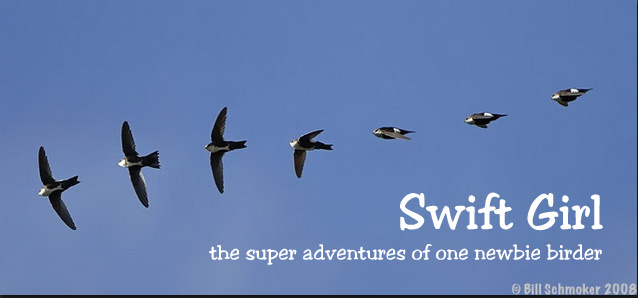
I am saying with an immense joy (I'm actually jumping up and down!) "I GOT TO BE A PART OF A CHRISTMAS BIRD COUNT THIS YEAR!!!!! Yee-haw!
On my last full day in California, I got to be a participant in the North Salton Sea CBC. I've visited the Salton Sea before, so I knew what great birds I'd get to see (and count.) But what I didn't expect was the great
number of birds I would be seeing. OMG....thousands. I mean it, thousands of birds. Took my breath away.
Our morning started out with 40 degree temps in the early hours (7am.) That was cold to be birding. I was looking forward to the sunrise and the heat that it would produce. I'm glad I had brought my winter coat with me to CA.

We broke up in teams, mine being a team of about 9 participants. Our leader had prior experience counting Salton Sea birds (he already does it voluntarily several days a month) so I felt we had a Salton Sea expert on hand. This was my first CBC and I was nervous about my counting abilities. I got a great lesson on quick counting large flocks and just went with what I could do. I was looking forward learning a lot that day.

During the morning hours, our team did the ponds within the
Torrez-Martinez Desert Chuihilla Indian Reservation, which I considered a privilege, because you can't bird there without permission from the Reservation. It was here that I became part of CBC history!

While everyone was watching and counting hundreds of Double-Crested Cormorants flying over, my eye caught something else flying lower and in the opposite direction of the Cormorants. It was big and white and honestly, I thought I was looking at a White Pelican as first. But with closer examination (I'm talking within a second,) I figured out that it was a Swan.
I yelled Swan and everyone found it quickly. I mean it is a very large bird. I was able to grab my camera and got some fuzzy photos of it (it was quite a bit away.)
 Tundra Swan
Tundra Swan
What I had found was a Tundra Swan. It was one of only a couple dozen seen at the Salton Sea in the last hundred years, and not sure, if ever, during a CBC. In other words, I found a rarity. A report was filed on my sighting, which included witnesses, what type of binoculars I used and a full narrative on how I (we) found it. I am so humbled by my teams experience in helping to identify what type of species the Swan was (the photos helped.)
Maybe I should change my nickname to Swan Girl. :)
 The Eurasian Green-winged Teal Pond
The Eurasian Green-winged Teal Pond
The rest of the day wasn't without more excitement. Fellow BMCP birder Dan Baumann found a Eurasian Green-Winged Teal, which is a MAJOR rarity. He got reported, too. :)
 Our Team Leader, Darrell
Our Team Leader, Darrell
My morning count came to 55 species, with 5 lifers for me. The additions to my life list are Black-tailed Gnatcatcher, Tundra Swan, Eurasian Green-Winged Teal, Spotted Sandpiper, and Least Sandpiper. There were more species seen by my team members (they went bushwacking,) but I only count the birds I actually see with my own eyes.
The day had just begun...more about my incredible afternoon in the next post.











































